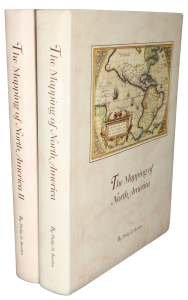Rare Maps and Prints
- World & Celestial
- North America
- West Indies, South & Central America
- British Isles
- British Isles
- English counties
- Large-scale
- Bedfordshire
- Berkshire
- Buckinghamshire
- Cambridgeshire
- Cheshire
- Cornwall
- Cumberland
- Derbyshire
- Devon
- Dorset
- Durham
- Essex
- Gloucestershire
- Hampshire
- Herefordshire
- Hertfordshire
- Huntingdonshire
- Islands
- Kent
- Lancashire
- Leicestershire
- Lincolnshire
- Middlesex
- Norfolk
- Northamptonshire
- Northumberland
- Nottinghamshire
- Oxfordshire
- Rutland
- Shropshire
- Somerset
- Staffordshire
- Suffolk
- Surrey
- Sussex
- Warwickshire
- Westmoreland
- Wiltshire
- Worcestershire
- Yorkshire
- Wales
- Scotland
- Ireland
- Western Europe
- Eastern Europe
- Middle East
- Africa
- Asia
- Australasia & Pacific
- Decorative Prints
- Title Pages
Mr. Philip D. Burden
P.O. Box 863,
Chalfont St. Giles, Bucks HP6 9HD,
UNITED KINGDOM
Tel: +44 (0) 1494 76 33 13
Email: enquiries@caburden.com
The RARE FIRST STATE of an important AMERICAN REVOLUTIONARY WAR map uncut. Claude Joseph Sauthier (1736-1802) was a native of France. As an engineer and surveyor, he arrived in North Carolina in 1767 in the employ of Governor William Tryon. He transferred to New York with Tryon in 1771. In that year he was involved in drafting the boundary line between New York and Quebec at the 45th parallel. In 1773 Sauthier was named surveyor of the Province of New York which at the time included present day Vermont. He was commissioned to produce a survey from New York to Quebec and using the work of Bernard Ratzer along with his own surveys he produced ‘A Map of the Province of New York’ published by William Faden on 1 August 1776.
Control of New York was pivotal to the British Campaign. Early in the war control was made of the city and several battles were fought over control of the Hudson River. Not only did it split the colonies but provided access to Canada through the Hudson River valley. Accurate maps of the region were therefore of critical importance. This was particularly so in the upper regions of the river and state.
Sauthier followed his map of the Province just two months later with this one of the Hudson River portrayed in three vertical panels. It begins with New York in the lower left-hand corner and records great detail. The central strip illustrates the junction with the Mohawk River, Lake George and extends to Ticonderoga. Lake Champlain takes up much of the right-hand panel which extends to Fort Chambly in Canada. The whole is drawn at the scale of 4 miles to the inch.
Depth soundings are recorded as far north as Albany, with navigational hazards on Lake Champlain identified. All major roads and forts are identified. Several notes provide information on portages. Notes are even provided for portages, all of which is aimed at improving British mobility throughout the region.
Just eleven days after publication Lake Champlain would be the site of the Battle of Valcour Island. Led by guy Carleton a large British force moved down the Hudson River valley from Canada. Although Britain ultimately won this battle it forced them to retreat. Cumming (1974) pp. 72-4; Sellers & Van Ee (1981) no.1069; Stevens & Tree (1967) 23(a).
Control of New York was pivotal to the British Campaign. Early in the war control was made of the city and several battles were fought over control of the Hudson River. Not only did it split the colonies but provided access to Canada through the Hudson River valley. Accurate maps of the region were therefore of critical importance. This was particularly so in the upper regions of the river and state.
Sauthier followed his map of the Province just two months later with this one of the Hudson River portrayed in three vertical panels. It begins with New York in the lower left-hand corner and records great detail. The central strip illustrates the junction with the Mohawk River, Lake George and extends to Ticonderoga. Lake Champlain takes up much of the right-hand panel which extends to Fort Chambly in Canada. The whole is drawn at the scale of 4 miles to the inch.
Depth soundings are recorded as far north as Albany, with navigational hazards on Lake Champlain identified. All major roads and forts are identified. Several notes provide information on portages. Notes are even provided for portages, all of which is aimed at improving British mobility throughout the region.
Just eleven days after publication Lake Champlain would be the site of the Battle of Valcour Island. Led by guy Carleton a large British force moved down the Hudson River valley from Canada. Although Britain ultimately won this battle it forced them to retreat. Cumming (1974) pp. 72-4; Sellers & Van Ee (1981) no.1069; Stevens & Tree (1967) 23(a).
SAUTHIER, Claude Joseph
A Topographical Map of Hudsons River, with the Channels Depth of Water, Rocks, Shoals, &c. and the Country Adjacent, from Sandy-Hook New York and Bay to Fort Edward, also the Communication with Canada by Lake George and Lake Champlain, as high as Fort Chambly on Sorel River. . .
William Faden Corner of St. Martins Lane Charing Cross, London, 1776
805 x 530 mm., early outline and wash colour, uncut and separately issue, with small tear to upper margin just affecting the image, otherwise in good condition.
Stock number: 9884
SOLD






